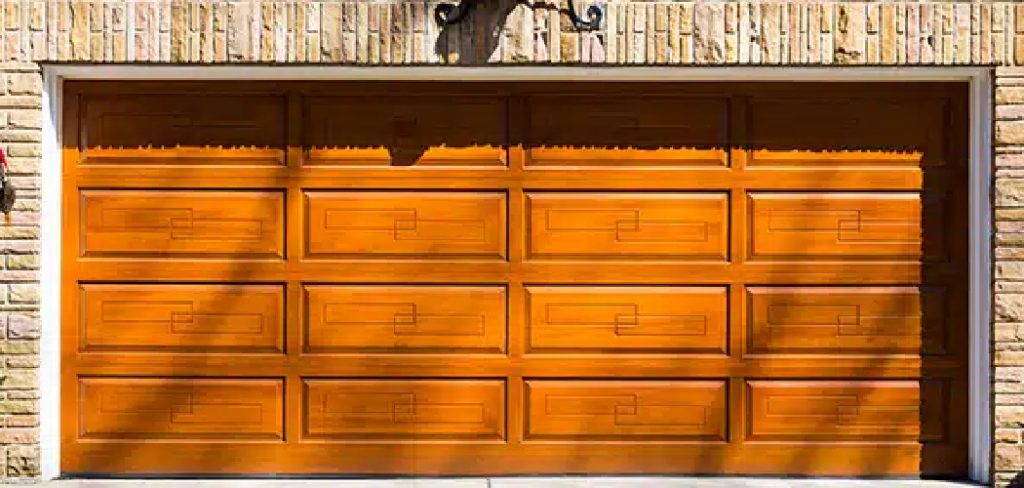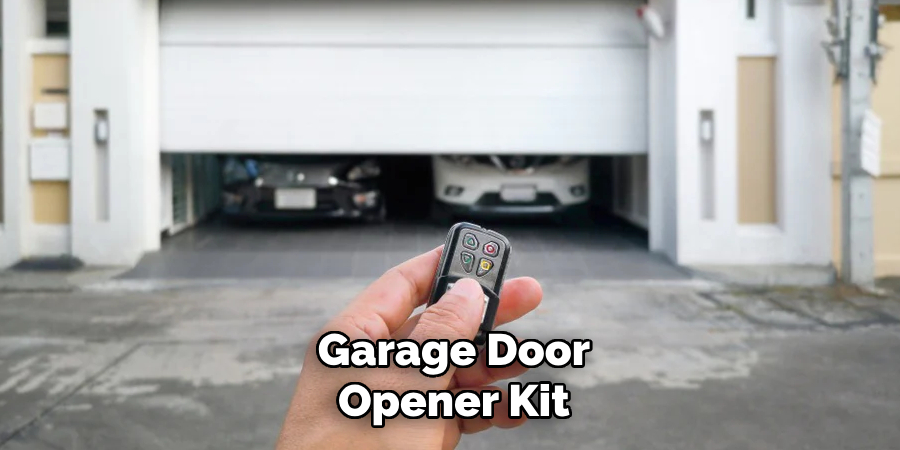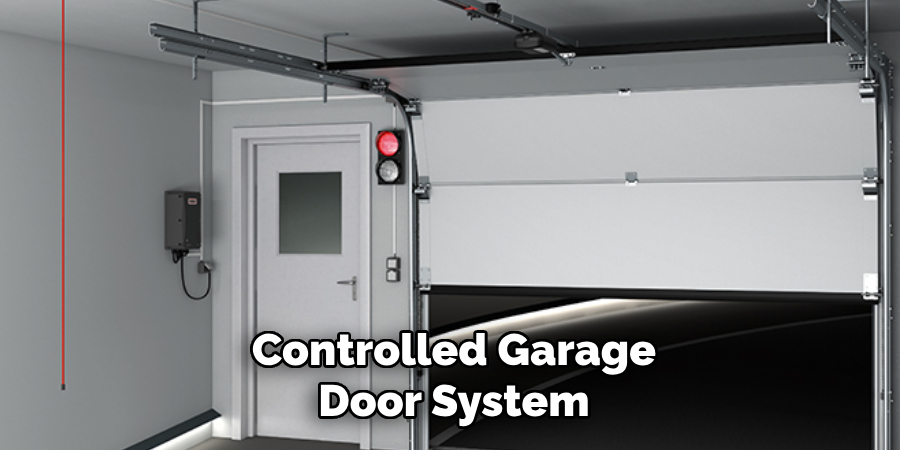Converting your garage door into an automatic one can greatly enhance convenience and security for your home. With the right tools and equipment, this upgrade allows you to open and close your garage door with the simple press of a button, eliminating the need for manual effort. Whether you’re looking to modernize your garage or improve accessibility, the process can be straightforward and cost-effective when approached correctly. This guide will walk you through the key steps of how to make garage door automatic.

What is an Automatic Garage Door?
An automatic garage door is a type of door that operates using an electric motor and a mechanism to open and close without manual intervention. Controlled by a remote, keypad, or smartphone app, these doors bring enhanced convenience and functionality to your home. They are equipped with sensors for safety, ensuring that the door stops or reverses if an obstruction is detected in its path. Automatic garage doors are popular for their practicality, security features, and ability to integrate with modern smart home systems, allowing users to control access to their garage with ease and reliability.
Benefits of Converting to Automatic
Converting your garage door to an automatic system offers numerous advantages that go beyond mere convenience. Firstly, it significantly enhances safety by allowing you to operate the door without physically stepping outside, which is especially beneficial during adverse weather conditions or at night. Additionally, automatic systems often come with advanced security features, such as rolling codes and smartphone integration, providing added protection against unauthorized access.
Another key benefit is improved accessibility—automatic garage doors are particularly helpful for individuals with mobility challenges, ensuring smoother and more effortless operation. Finally, this upgrade can increase the overall value of your home, making it a worthwhile investment in both functionality and property appeal.
Assessing the Type of Garage Door
Choosing the right type of garage door is an essential step in enhancing both the functionality and aesthetic appeal of your home. The first factor to consider is the material—common options include steel, wood, aluminum, and fiberglass, each offering varying levels of durability, maintenance requirements, and design versatility. Steel doors are popular due to their strength and low upkeep, while wood doors provide a timeless, classic appearance but may require more frequent maintenance.
Another aspect to evaluate is the style of operation, such as sectional, roll-up, or side-hinged doors, which should align with your garage space and personal preferences. Insulation is also a key consideration, especially for homeowners who use their garage as a workspace or live in regions with extreme temperatures. Understanding your needs and weighing these factors carefully will help you select a garage door that complements your lifestyle and stands the test of time.
10 Methods How to Make Garage Door Automatic
1. Install an Automatic Garage Door Opener Kit

The most common method to make your garage door automatic is by installing an automatic garage door opener kit. These kits typically include all the necessary components, including the motor, tracks, and remotes. The installation process involves mounting the motor above the door, connecting it to the tracks, and ensuring that it is properly aligned with the door’s movement. Once installed, you can use a remote control or wall-mounted keypad to open and close the door with ease. This method is ideal for most homeowners, as it is efficient and relatively simple.
2. Upgrade Existing Manual Opener with an Electric Motor
If you already have a manual garage door opener, but it’s no longer functioning efficiently, upgrading to an electric motor can be a cost-effective solution. This process involves removing the old manual opener, if necessary, and installing a new electric motor system. The motor is usually mounted on the ceiling of the garage and connected to the door via a chain or belt. The motor will move the door up and down when activated by a remote control or a wall-mounted button, providing the convenience of automatic operation.
3. Install a Smart Garage Door Opener
For tech-savvy homeowners, installing a smart garage door opener adds a layer of convenience and control. A smart opener connects to your home’s Wi-Fi network and allows you to control your garage door from anywhere using a smartphone app. This method typically involves replacing the existing opener with a Wi-Fi-enabled opener, which can be easily controlled from your phone. Additionally, some smart openers have features like voice control integration with virtual assistants such as Amazon Alexa or Google Assistant, offering hands-free operation.
4. Install a Remote-Controlled Garage Door System

Another method to make your garage door automatic is by installing a remote-controlled system. A remote-control system allows you to open and close the door from a distance using a hand-held remote. The remote typically operates on a frequency that is matched to a receiver installed on the garage door motor. After installation, you can program the remote to synchronize with the receiver, enabling you to operate the door without physically being near it. This method is ideal for homeowners who want a straightforward and convenient solution without relying on smartphones or other smart devices.
5. Use a Keypad Entry System
To enhance the convenience and security of your automatic garage door, consider adding a keypad entry system. This method involves installing a keypad on the exterior of your garage, typically near the door. The keypad allows you to enter a passcode to open and close the door. This solution is beneficial for families or individuals who may not always carry a remote or smartphone. It offers keyless entry and is ideal for providing access to guests or service personnel without needing a physical key. A keypad system can be integrated with any automatic opener for added flexibility.
6. Add a Motion Sensor to the Garage Door Opener
Integrating a motion sensor with your garage door opener adds an extra layer of automation. With a motion sensor, your garage door can automatically open when it detects movement, such as when you approach the garage with your car. The sensor typically detects the motion from a distance of several feet and sends a signal to the opener to activate the door. This method is especially useful for those who want their garage to automatically open as they approach, eliminating the need to press a button or remote.
7. Install an Automatic Garage Door Locking System
Security is an important consideration when converting your garage door to automatic, and one effective method to ensure your garage is secure is by installing an automatic locking system. This system works by automatically locking the door once it is closed, offering peace of mind when you leave the house.

The locking mechanism can be integrated into your existing automatic door opener, ensuring that the door is securely locked every time it is closed. Automatic locks can be programmed to engage after a set period or when the door reaches the fully closed position, providing additional security for your home.
8. Add a Battery Backup System
An important consideration when making your garage door automatic is ensuring that it will still operate during a power outage. A battery backup system is designed to kick in when the primary power supply is cut off. This system is installed alongside your automatic door opener and charges while the power is on. If there is a power failure, the battery backup takes over and powers the motor to operate the door. Adding this feature ensures that you can still use your garage door opener even when the electricity is down, making it a convenient solution for emergencies.
9. Integrate an Automatic Stop and Reverse Feature
Safety is a priority when working with automatic doors, and integrating an automatic stop and reverse feature is a smart way to prevent accidents. This system uses sensors located on the bottom of the garage door to detect objects or obstacles in the door’s path. If an obstruction is detected, the system will automatically stop the door’s movement and reverse it, ensuring that nothing is damaged or trapped by the door. Many modern garage door openers come with this safety feature built-in, but it can also be added as an upgrade for older systems.
10. Install a Timer for Automatic Closing

Another way to make your garage door more automated is by installing a timer for automatic closing. A timer system allows you to set the door to close after a specified time, even if you forget to close it yourself. This feature is particularly helpful for ensuring that the door doesn’t remain open for too long, which could lead to security concerns or energy loss. Timers can be easily integrated with most automatic openers, either as a standalone system or through a smart app that allows for remote programming and control.
Conclusion
Making your garage door automatic provides numerous benefits, from enhanced security to greater convenience. Whether you choose to install a basic remote-controlled opener or go for a more advanced smart system, there are several methods available to suit your preferences and needs. From integrating motion sensors to adding automatic locks and timers, each method allows for more effortless control of your garage. Regardless of the method you choose, ensuring the proper installation of your automatic system will improve your daily routine and add significant value to your home. So, there you have it – a quick and easy guide on how to make garage door automatic.

